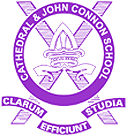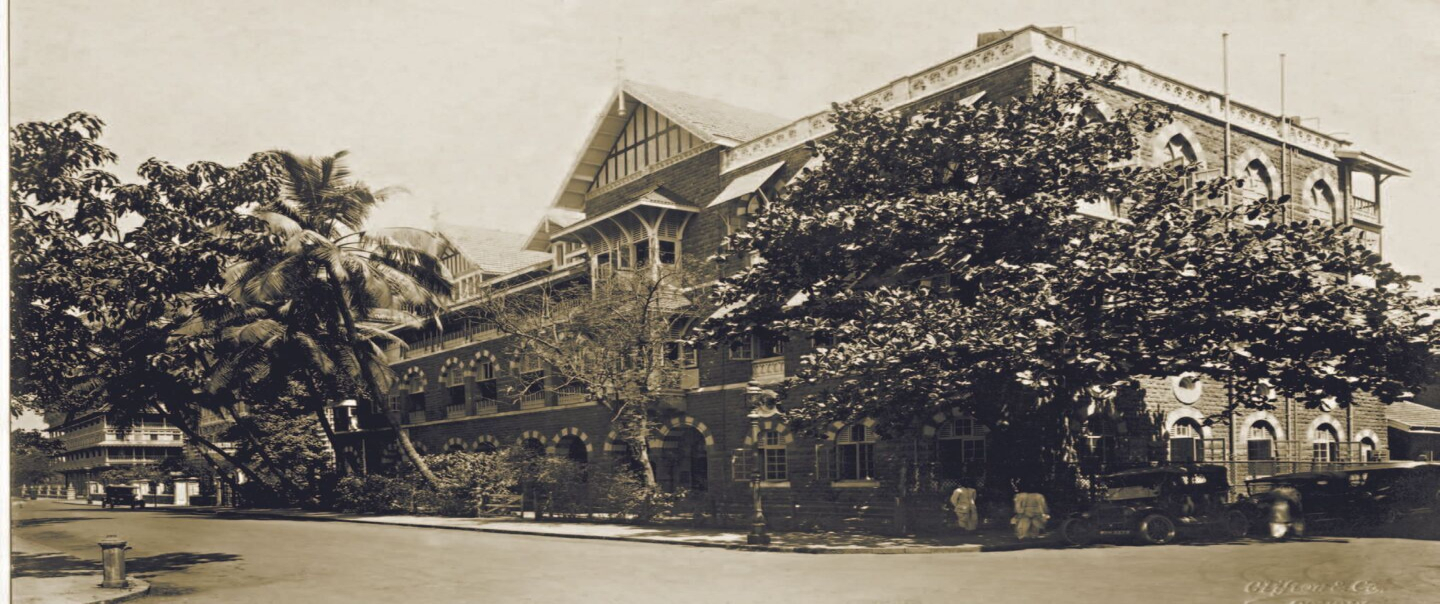History of the School
The Cathedral and John Connon School in Mumbai, established in 1860, boasts a rich and distinguished history. Founded through the efforts of Bishop Harding and Canon George Candy, the first Principal, the school initially served the European and Anglo-Indian communities of the city. In 1870, it was named in honor of St. Thomas Cathedral and John Connon, a significant benefactor whose support was instrumental in its early development. Over the years, the school expanded its facilities and curriculum, becoming co-educational in 1965 and further enriching its diverse academic environment.
Throughout its history, the Cathedral and John Connon School has maintained a steadfast commitment to academic excellence, holistic education, and the development of character and leadership in its students. The school has produced numerous notable alumni who have excelled in fields such as business, politics, arts, and sciences. Its legacy of fostering intellectual growth, critical thinking, and social responsibility continues to make it one of Mumbai's premier educational institutions. Today, the Cathedral and John Connon School remains a beacon of high-quality education, nurturing well-rounded individuals prepared to meet the challenges of the modern world.
1860
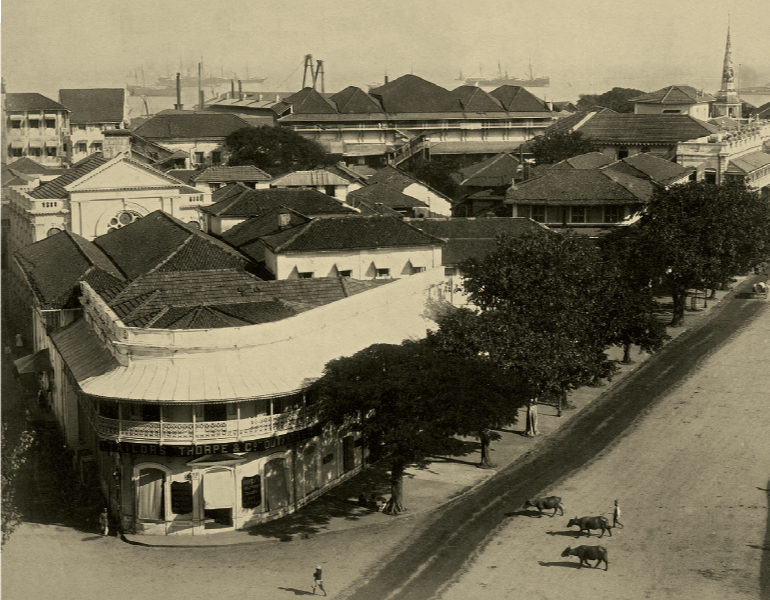
On 14th November, Bishop Harding and the Cathedral Chaplain opened a grammar school within the walled city of Bombay called the Fort Christian Schools or Cathedral Grammar School on Rampart Row. This day is known to every Cathedralite as Founders’ Day.

On 14th November, Bishop Harding and the Cathedral Chaplain opened a grammar school within the walled city of Bombay called the Fort Christian Schools or Cathedral Grammar School on Rampart Row. This day is known to every Cathedralite as Founders’ Day.
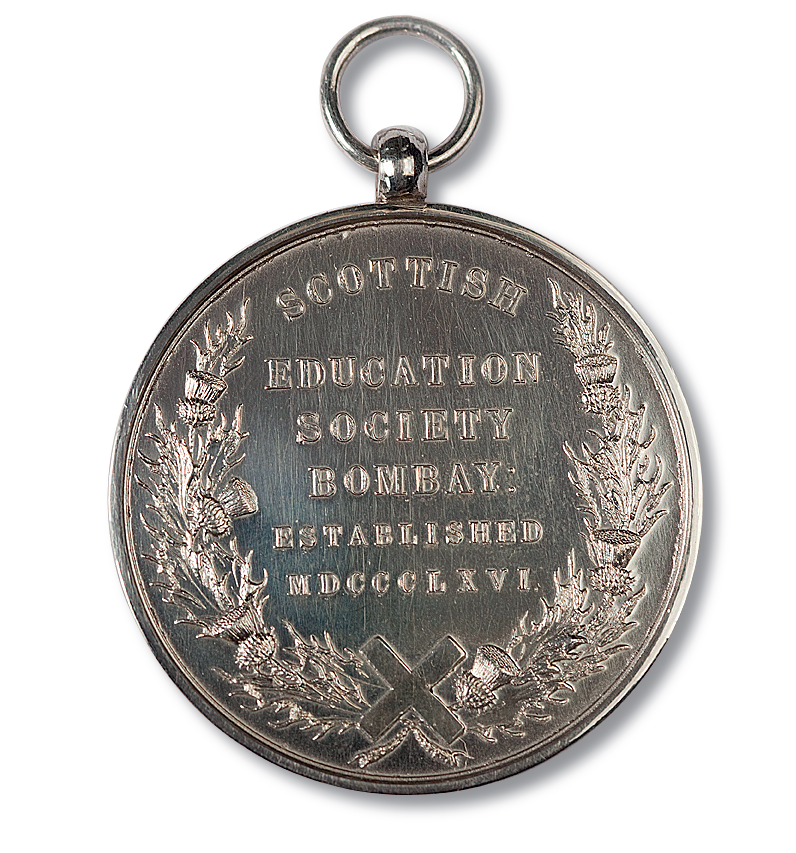
The Bombay Scottish Education Society was founded.

The Bombay Scottish Education Society was founded.
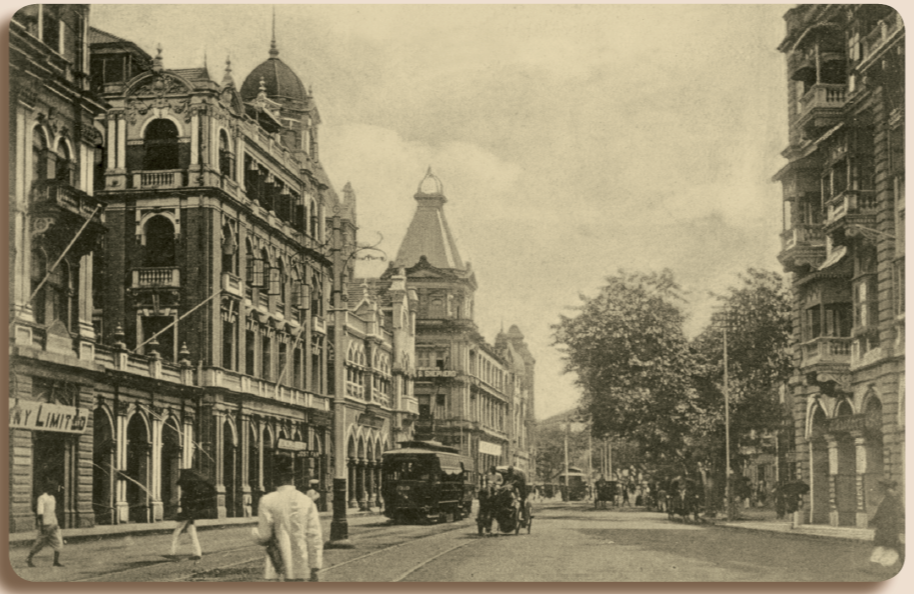
A Choir School was established with the objective of providing choristers for the St. Thomas’ Cathedral, the first Anglican Church in the city, possibly located at 9 Hornby Road.

A Choir School was established with the objective of providing choristers for the St. Thomas’ Cathedral, the first Anglican Church in the city, possibly located at 9 Hornby Road.
After appeals continued, the Diocesan Byculla School set up by the Bombay Diocesan Society, was merged with the Choir School to form the Cathedral High School for Boys and Girls.
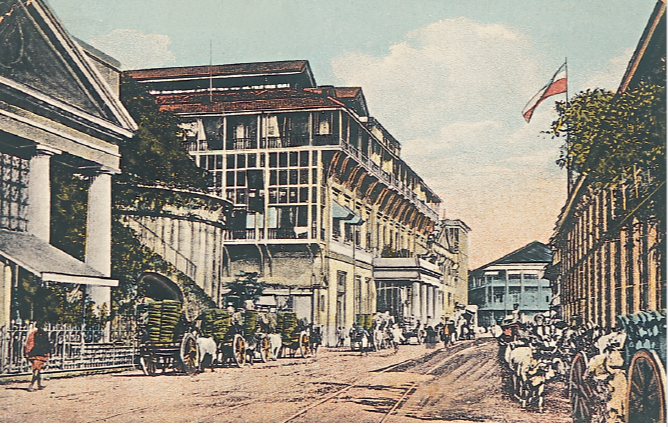
The Cathedral Girls’ School was started under the supervision of Headmistress Mrs. Whittle and Mrs. Evans, wife of the then headmaster of the Boys’ School. It was housed in the Old High Court eloquently described by a scribe as a “gracefully Italianate building with its lofty colonnade surmounted by a balcony.”

The Cathedral Girls’ School was started under the supervision of Headmistress Mrs. Whittle and Mrs. Evans, wife of the then headmaster of the Boys’ School. It was housed in the Old High Court eloquently described by a scribe as a “gracefully Italianate building with its lofty colonnade surmounted by a balcony.”
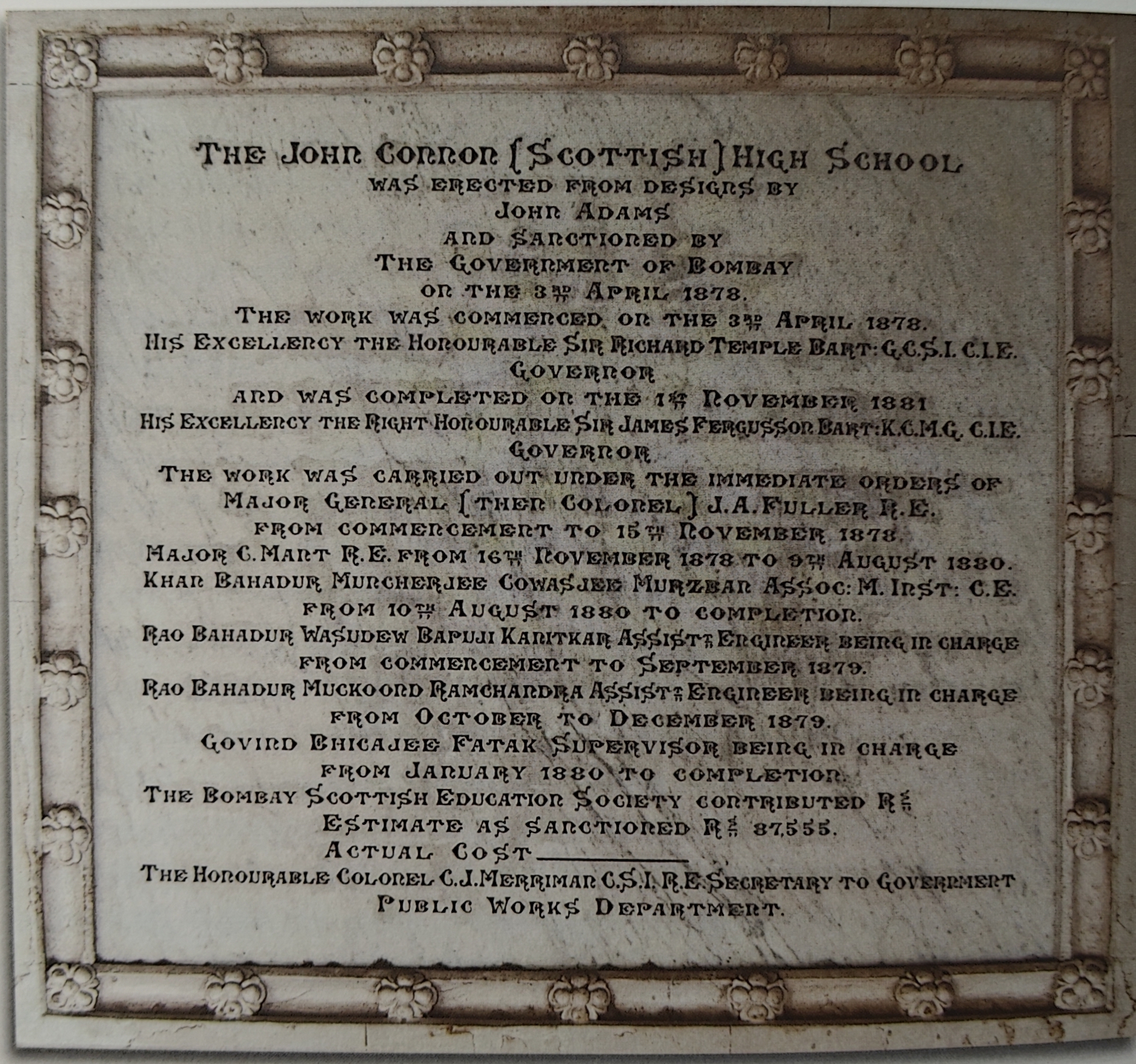
The Bombay Scottish Education Society put up a building on the Esplanade, and named it The John Connon High School after the Chief Registrar of Bombay. At the opening of the John Connon High School in November 1881, a marble plaque commemorating its completion was unveiled.

The Bombay Scottish Education Society put up a building on the Esplanade, and named it The John Connon High School after the Chief Registrar of Bombay. At the opening of the John Connon High School in November 1881, a marble plaque commemorating its completion was unveiled.
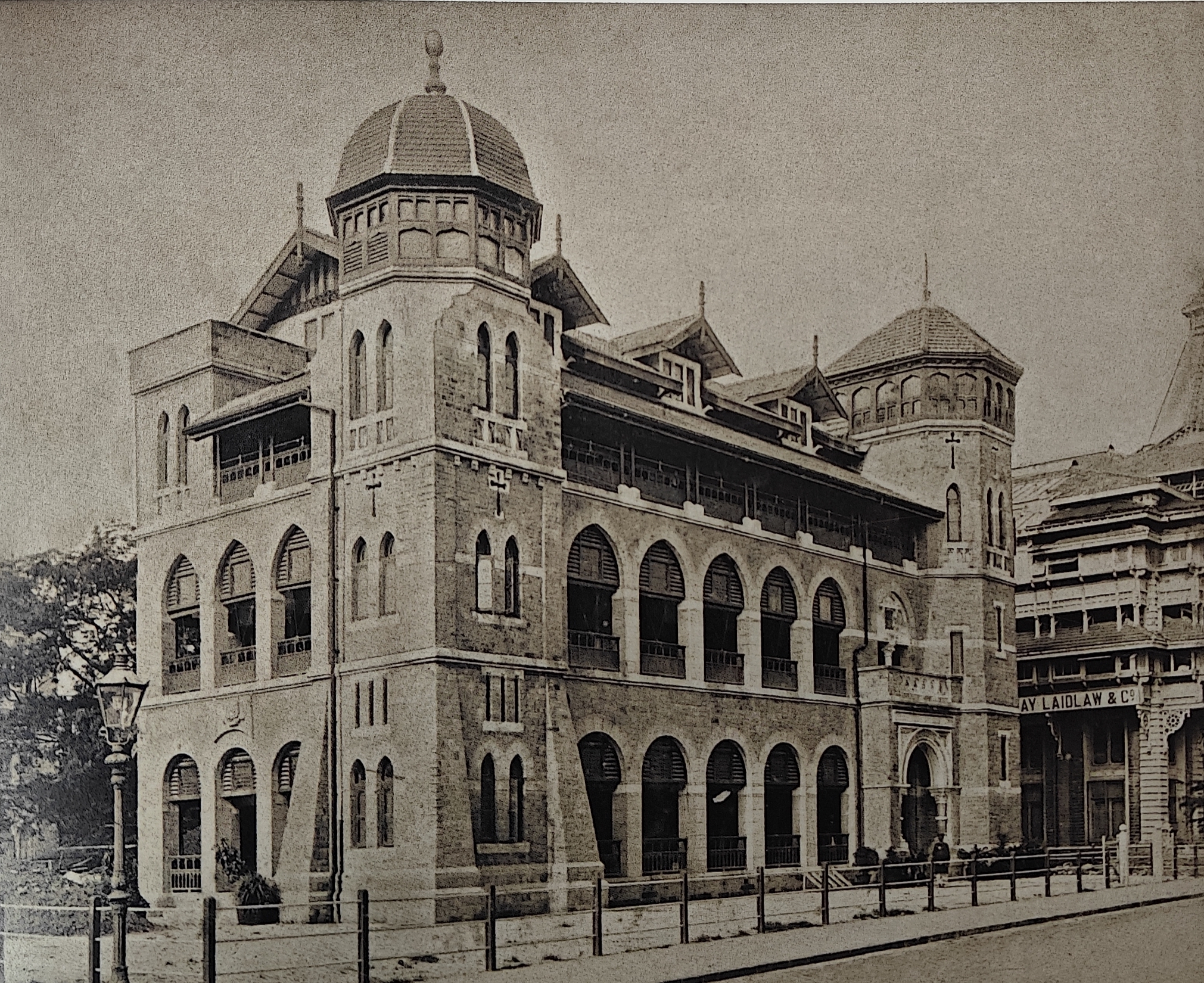
The present Senior School building on the former Outram Road was erected, a blend of Indian and Gothic architecture. This building housed the Cathedral Boys School.

The present Senior School building on the former Outram Road was erected, a blend of Indian and Gothic architecture. This building housed the Cathedral Boys School.
The Bombay Scottish Education Society took over the small school conducted by the Wesleyan Church in Colaba Causeway. This became the kindergarten department of The John Connon School till it was closed in 1920.
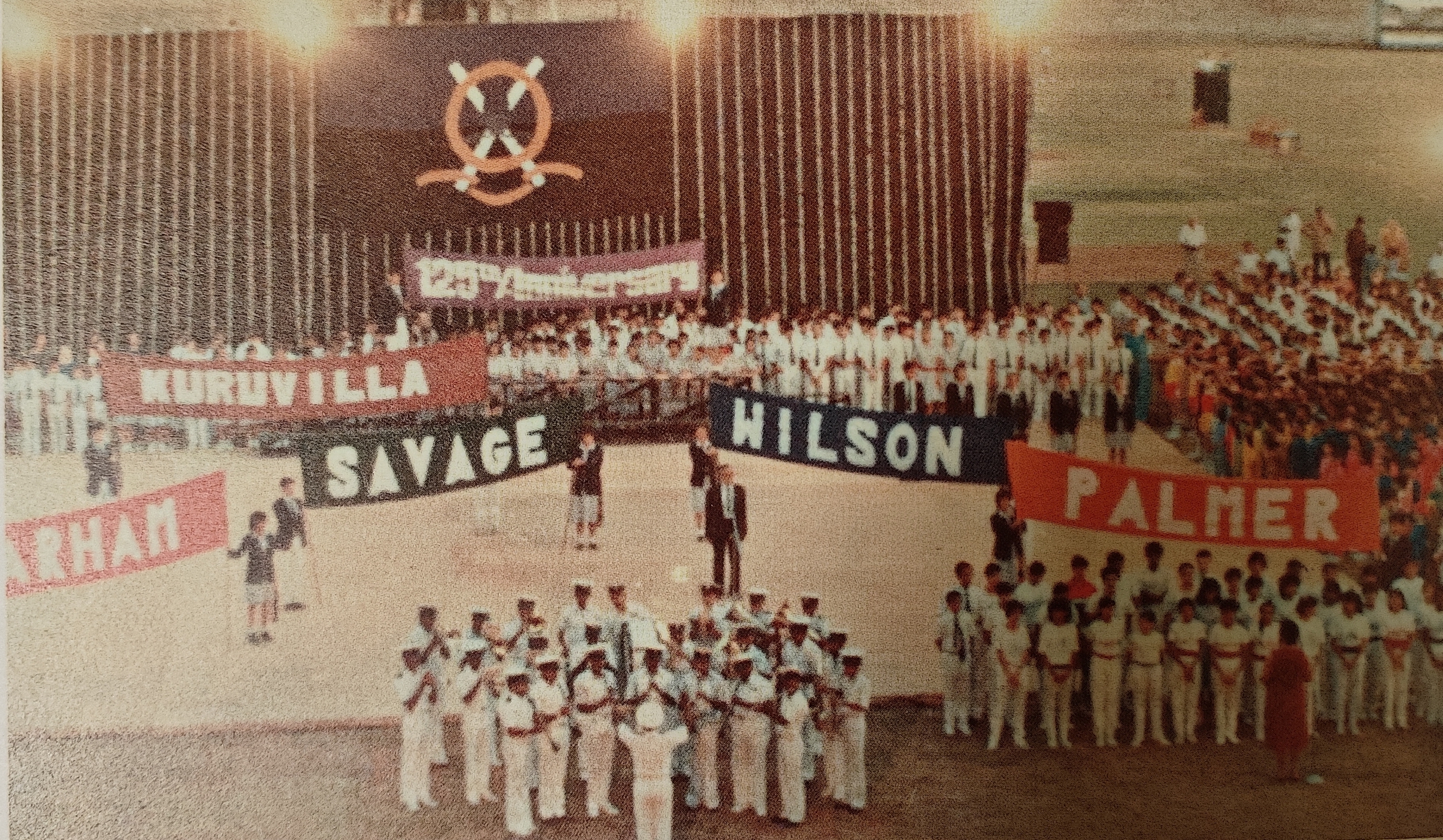
The School House system was established formally, where boys were divided to ease team selection in sports and extracurricular activities. Each house was allowed to choose their names, where luminaries Palmer, Savage, Wilson and Bahram lent their names and inspiration.

The School House system was established formally, where boys were divided to ease team selection in sports and extracurricular activities. Each house was allowed to choose their names, where luminaries Palmer, Savage, Wilson and Bahram lent their names and inspiration.
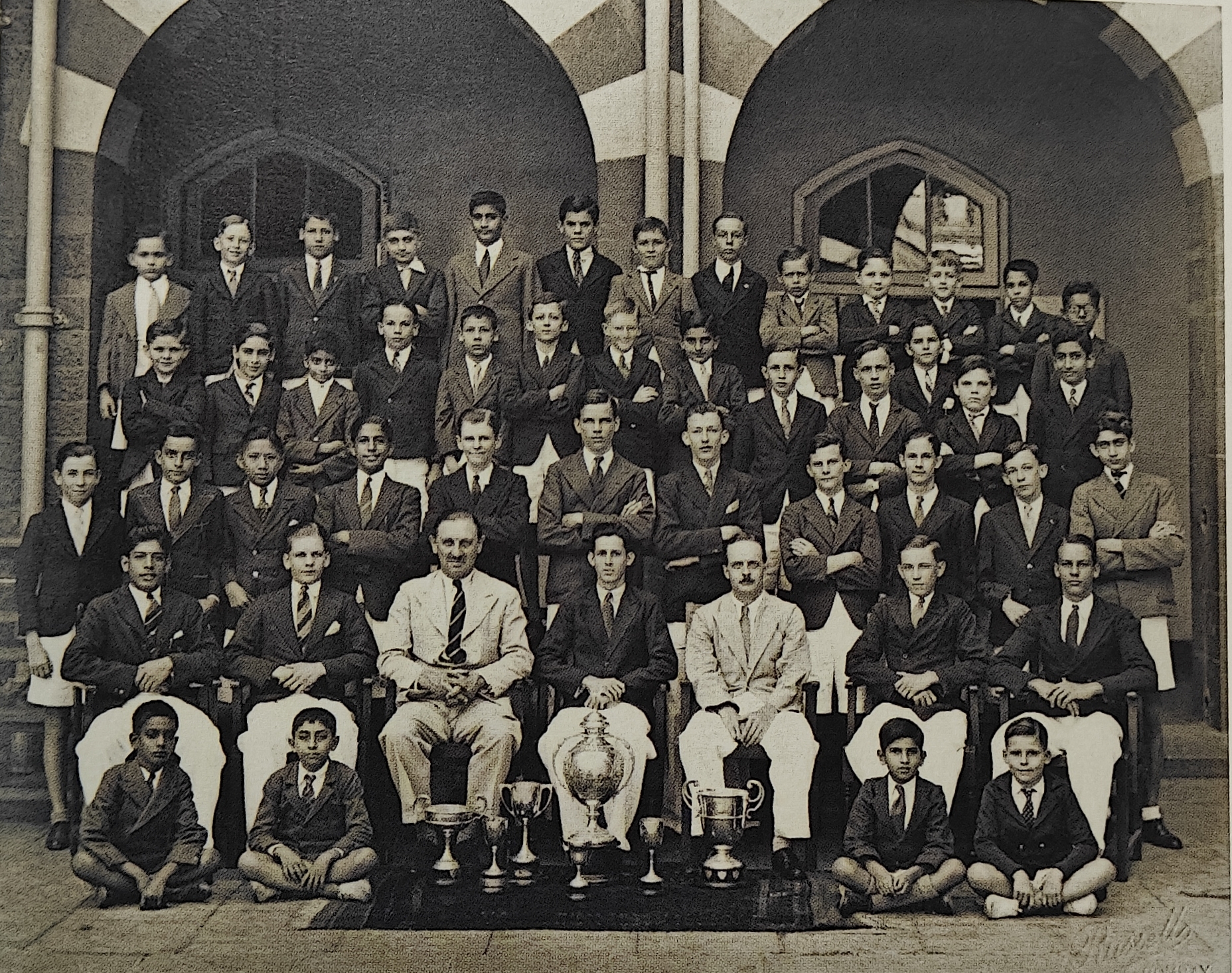
The first formal House championship was held where Barham was victorious, winning the Haig Brown cup. In quick succession, all save Wilson house captured the win, Savage in 1923 and 1924, Palmer in 1925 and 1926.

The first formal House championship was held where Barham was victorious, winning the Haig Brown cup. In quick succession, all save Wilson house captured the win, Savage in 1923 and 1924, Palmer in 1925 and 1926.
By an agreement dated the 11th day of April, 1923, the Governing Board of Cathedral High School, Bombay declared “the separate undertakings of the Cathedral High School and the Scottish Society be merged from 1st October 1922 into an amalgamated society under the Indian Company Act of 1913.” The schools were reorganised into one monolith, The Cathedral & John Connon School with the Cathedral Boys' School, the Cathedral Girls' School, and the John Connon School.
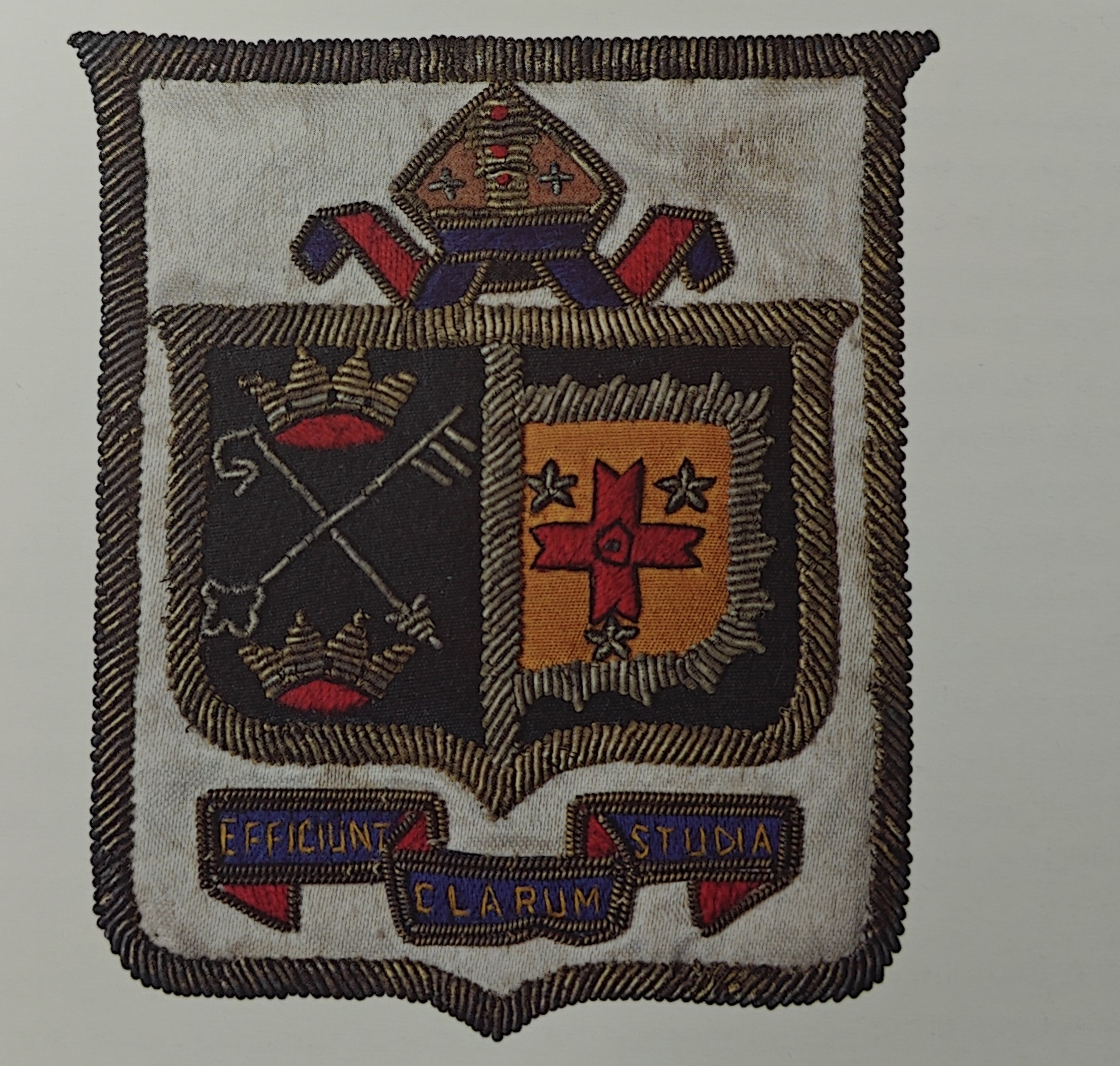
Miss Norah Whitfield, the new Principal of the Girls' School, suggested a distinguishing badge to celebrate the alliance of both elements of the Society: Anglican and Scottish. A badge was designed in which the Bishop's Mitre represented the Anglican side, while the Scottish aspect was symbolised by the white diagonal cross of St. Andrew, the patron saint of Scotland. The current school badge is inspired by this design.

Miss Norah Whitfield, the new Principal of the Girls' School, suggested a distinguishing badge to celebrate the alliance of both elements of the Society: Anglican and Scottish. A badge was designed in which the Bishop's Mitre represented the Anglican side, while the Scottish aspect was symbolised by the white diagonal cross of St. Andrew, the patron saint of Scotland. The current school badge is inspired by this design.
The first House Masters in the school’s history were appointed - Mr Eagles (Barham), Mr Flight (Palmer), Mr Pearson (Savage) and Mr EER Church (Wilson)
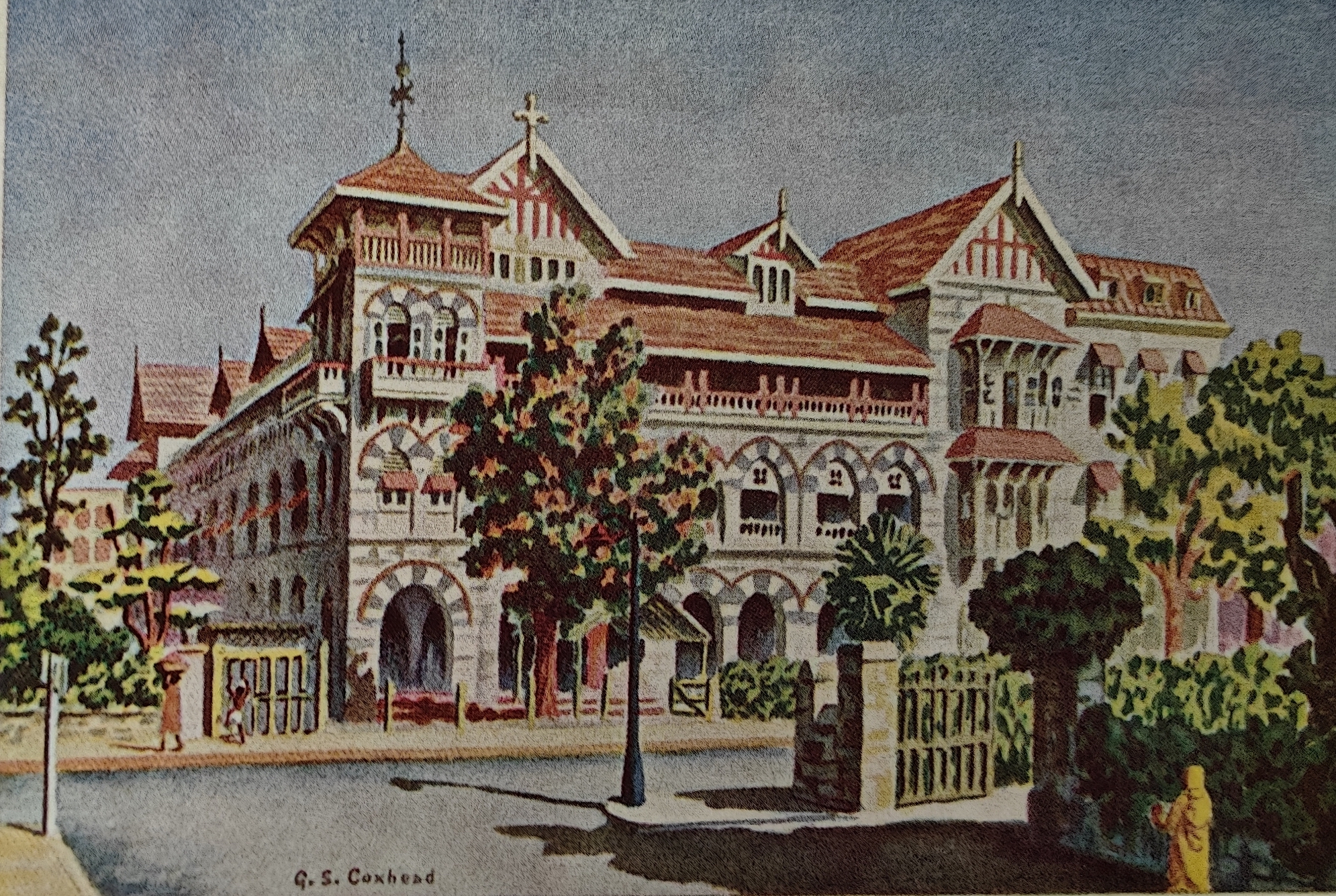
EER Church wrote Primus in Indis as the school song though he has attributed the words and lyrics to a consortium of writers including his friends and fellow teachers, Eagles and Pearson.

EER Church wrote Primus in Indis as the school song though he has attributed the words and lyrics to a consortium of writers including his friends and fellow teachers, Eagles and Pearson.
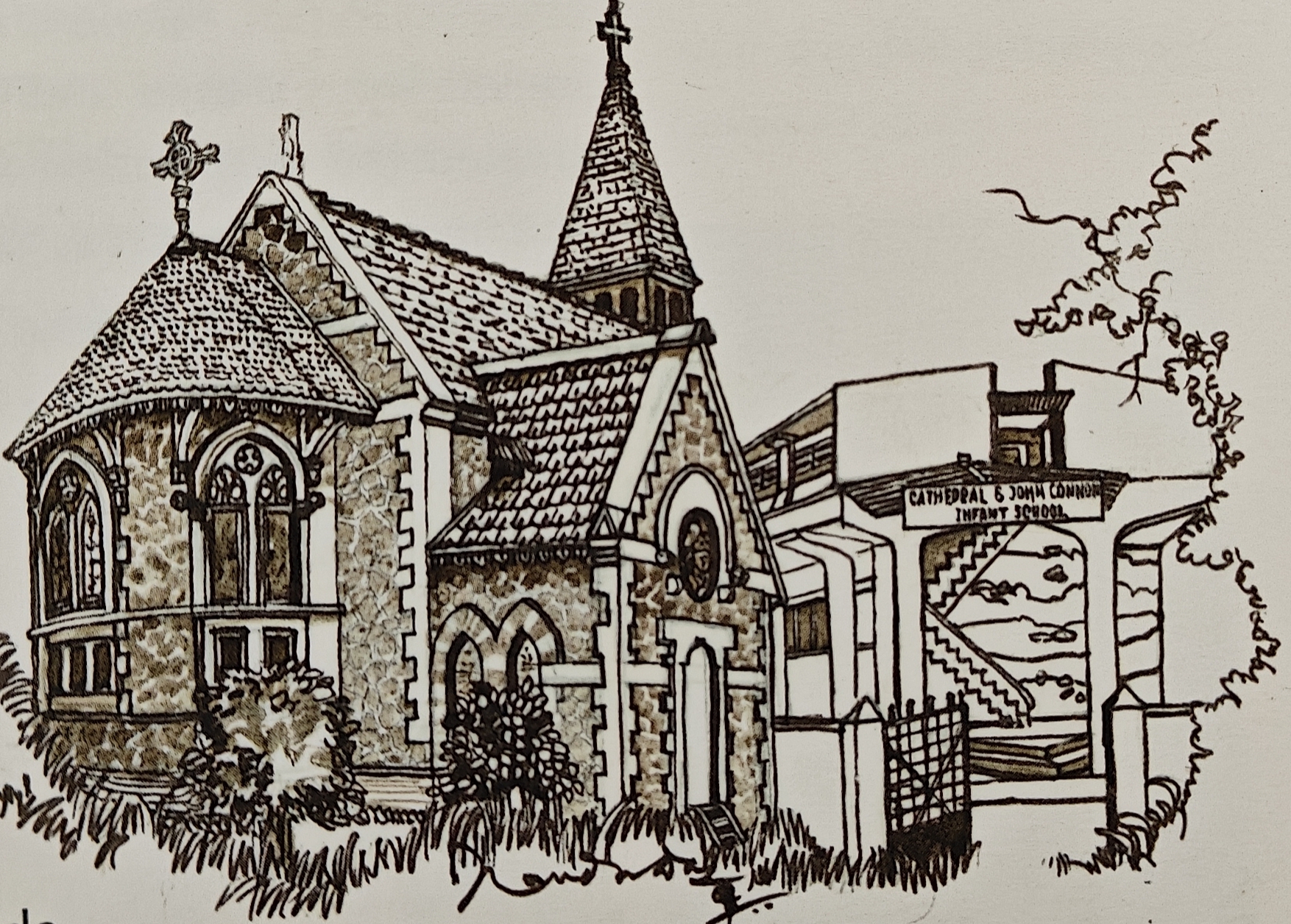
The Cathedral Infant School was opened by Dr PV Cherian, Governor of Maharashtra, on 18 February 1965.The Malabar Hill Infant School commenced in 1965 with 218 pupils, and Mrs Jean Gupta as the first Headmistress.

The Cathedral Infant School was opened by Dr PV Cherian, Governor of Maharashtra, on 18 February 1965.The Malabar Hill Infant School commenced in 1965 with 218 pupils, and Mrs Jean Gupta as the first Headmistress.
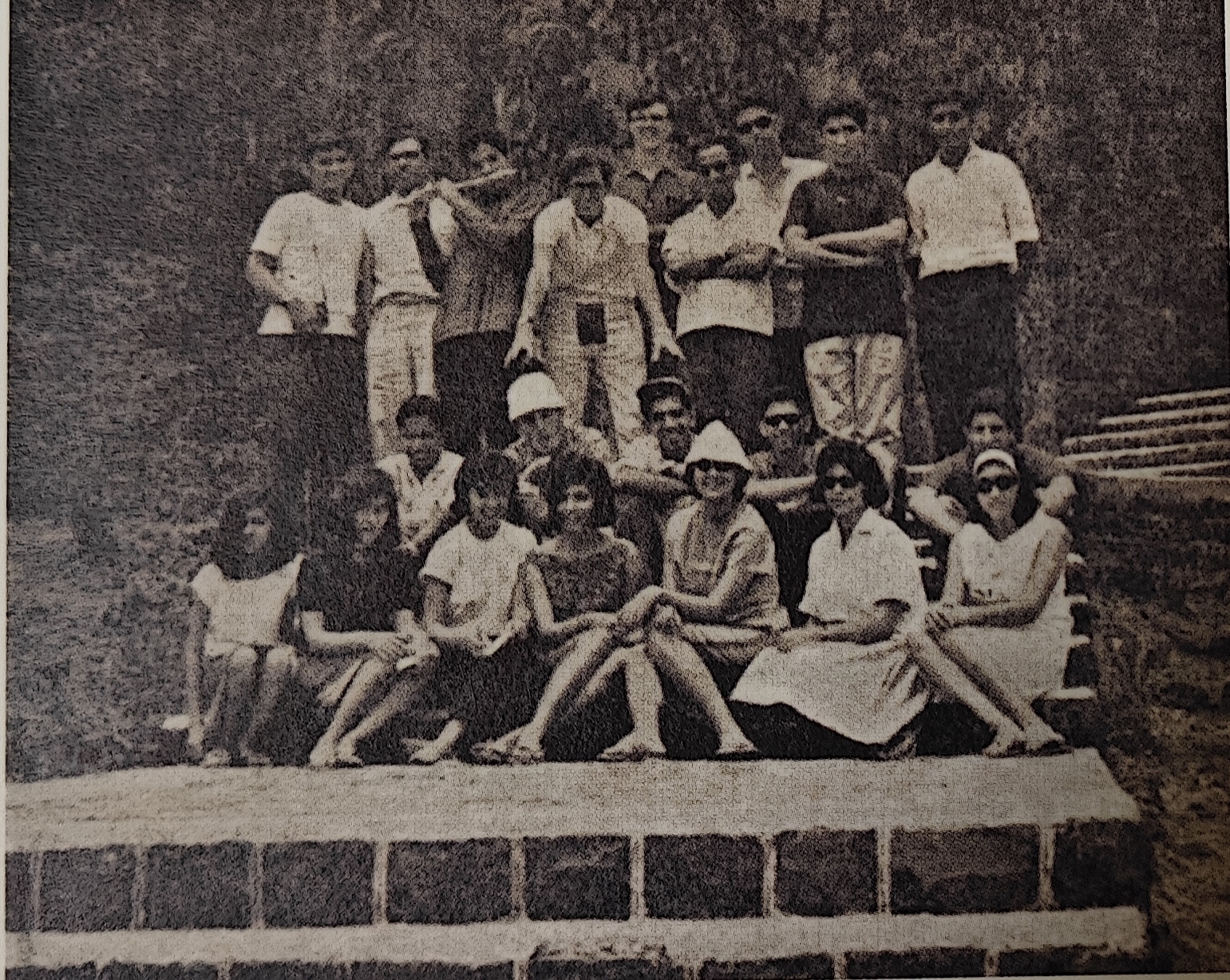
The Boys School, the Girls School, The Junior School and Infant School were merged to become co-educational.

The Boys School, the Girls School, The Junior School and Infant School were merged to become co-educational.
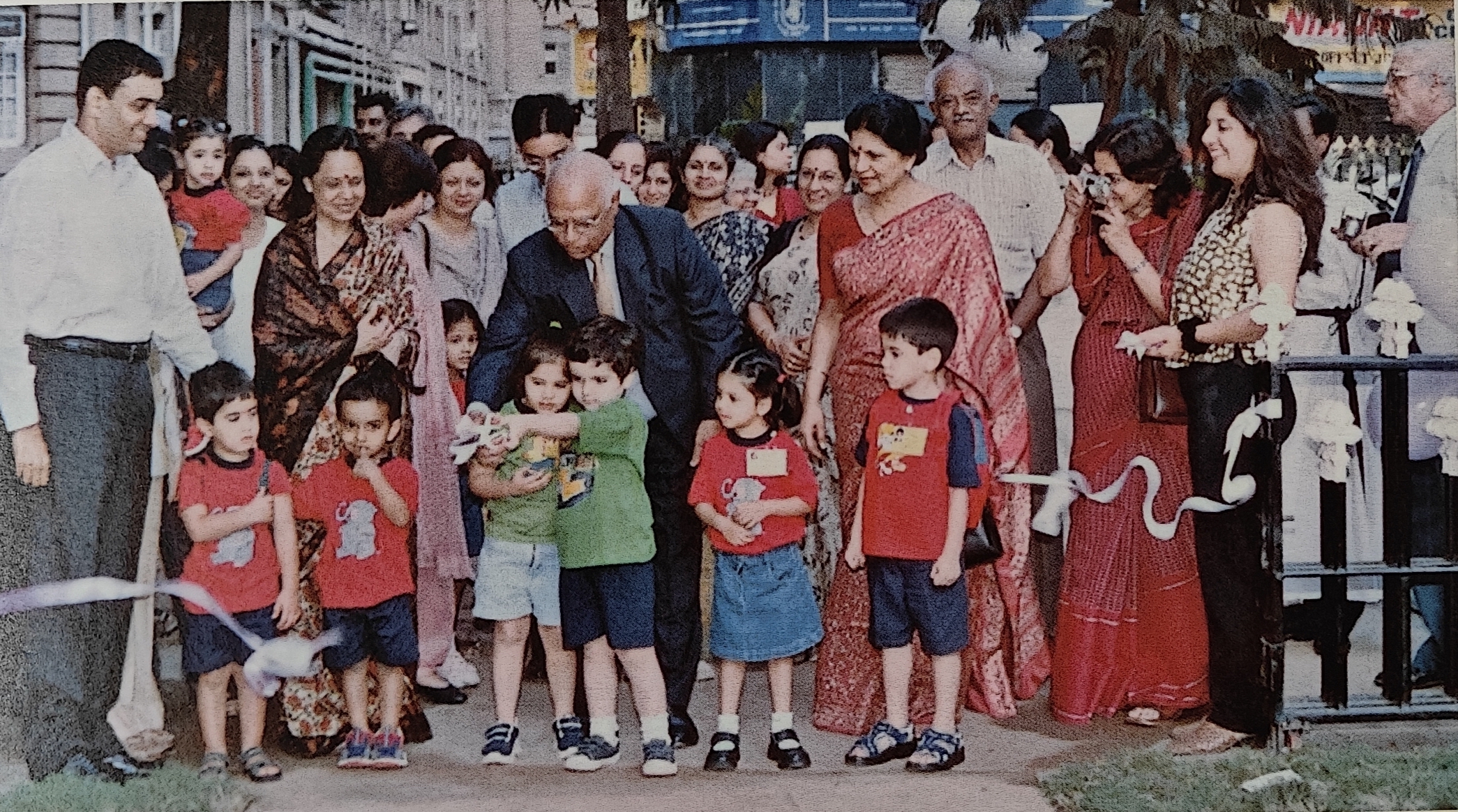
The Cathedral and John Connon Pre-primary School was founded at the St. Thomas’ Cathedral on Veer Nariman Point. It was inaugurated by Chairman T Thomas.

The Cathedral and John Connon Pre-primary School was founded at the St. Thomas’ Cathedral on Veer Nariman Point. It was inaugurated by Chairman T Thomas.
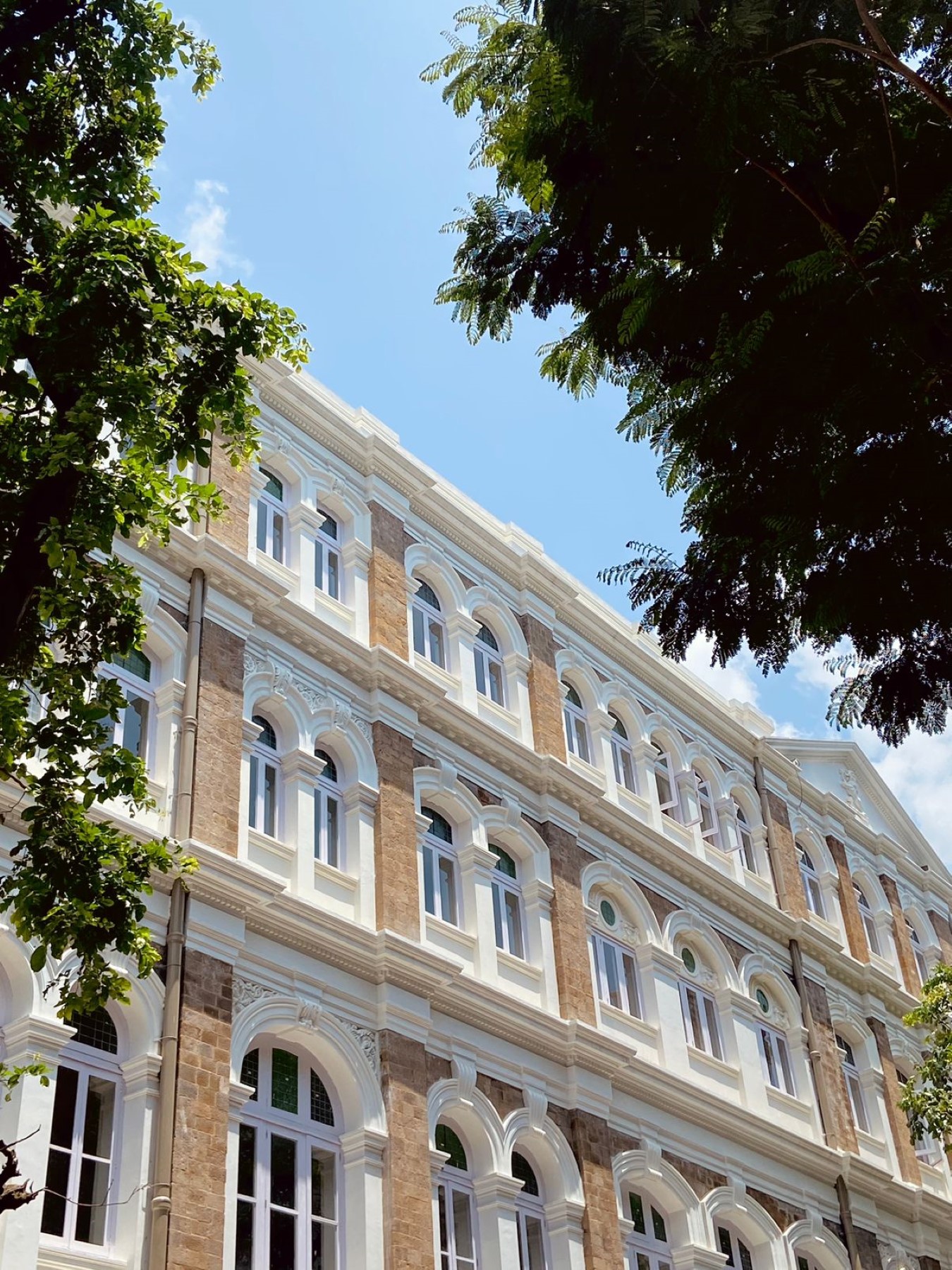
The newest building of the school, Cathedral High School formerly called Thomas House became operational. It houses standards XI and XII of ISC and IBDP curriculum.

The newest building of the school, Cathedral High School formerly called Thomas House became operational. It houses standards XI and XII of ISC and IBDP curriculum.
